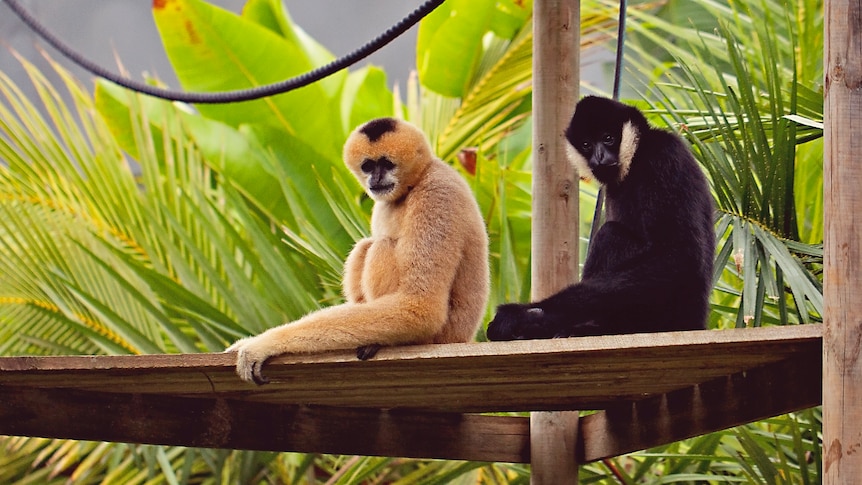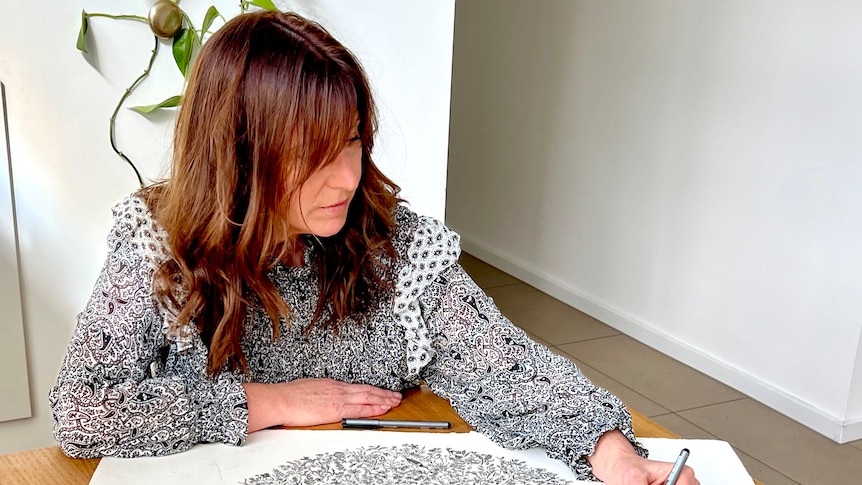The CSIRO has released details of more than 136 new species of animals and three plants identified in the past year.
The new species include four fish, 117 insects, 11 jumping spiders, three plants, a frog, a millipede, an earthworm, and a marine trematode — a parasitic flatworm.
The trematode was found inside a fish.
Now called Enenterum petraeit was named after the baby daughter of its identifier, Petra.
David Yeates, director of the CSIRO’s Australian National Insect Collection, said choosing a favorite out of the newly identified species was a bit like being asked to “choose a favorite child”.
However, he said one of the most interesting is a species of ant — now known as Anonychomyrma inclinata — which “babysits” the caterpillars from one of Australia’s rarest butterflies, the bulloak jewel butterfly.
“The ants carry the little caterpillars out from under the bark of the bulloak tree to feed on the soft tips of the leaves or needles at night; they carry them out and then back,” Dr Yeates said.
It’s a symbiotic relationship, where the ants protect the caterpillars from other ants, and get something in return, he said.
“The ants feed on a sugary substance that the caterpillars produce from glands. The ants get this nice sugary secretion and the butterflies get protection.”
As well as it being a fascinating strategy, that knowledge helps to direct efforts to conserve the bulloak jewel butterfly.
“When we’re trying to manage that rare and beautiful butterfly, we know it only occurs where that ant occurs in that particular [species of] tree.”
With only an estimated 25 per cent of Australian species having been formally identified, this work highlights the important role that the CSIRO’s National Research Collections perform, according to Dr Yeates.
Australian fauna — especially insects — is still poorly researched compared with fauna in most other developed countries.
“That’s an important point for Australians to understand. Australia is still the land of discovery.
“We have a first world economy, good infrastructure, but we drive past new species all the time.
“For a biologist to come here from Europe or China for example, they think it’s the land of milk and honey, because there are so many new species for them to work on.”
Other species in today’s haul include the purple-tip anthias, which have been found in waters between about 110 and 119 meters deep, off southeast Queensland.
Of the newly named fish species, three were types of anthias, and the fourth was a silverspot weedfish.
Most new fish species that are being classified are small, non-commercially viable species that tend to live in deep water where they are rarely encountered.
While that appears to be the trend, Dr Yeates said a few years ago a large, deepwater cod species was discovered at a fish market.
Of the newly discovered insects, 34 were beetles, including two new weevils found in the lava tubes at Undara Volcanic national park in Far North Queensland.
The two weevil species are the first cave-dwelling weevils to be described in Australia, according to the CSIRO.
The weevils have long, arachnid-like legs, are blind, and appear to have adapted to life in the darkness.
It’s possible that the two species, called Undarobius howarthi and u irvini are relics from a period when the region was covered in rainforest.
(Supplied: CSIRO)
Not all the insects identified by CSIRO and their partners were from Australia; 39 were species of gall wasps from the Americas.
Gall wasps typically cause grotesque growths to form on plants, and can create problems if they become invasive pests, such as the native citrus gall wasp, which has spread across Australia.
How do scientists know if it is a new species?
One of the many challenges in identifying new species, is working out whether you in fact have a new animal, or just a funny looking, but known one.
Animals and plants can develop different physical properties, known as phenotypic expression, depending on pressures in their particular environment.
The Tasmanian blue gum for example, can reach 100 meters in height in Tasmania’s forests, but stunted versions of the same species just a few meters tall are found on the coast.
Other species may change markedly depending on gender, and what stage of life they are at.
Which is why it’s important to have large collections such as the Australian National Research Collection.
Having lots of species in one place allows scientists to compare features to properly distinguish between their characteristics.
Even then, very specific expertise is required to work out where the animal or plants sits in its phylogenetic tree.
“What happens is that specimens that belong to new species accumulate in collections, and it’s a fair bit of effort to figure out if they’re new or not,” Dr Yeates said.
“It can take quite a bit of time and effort, including looking at their genes and genomes to determine if they really are different.”
It’s likely that many species will become extinct in Australia, or have already become extinct, before we’ve had a chance to identify them.
Figuring out what’s what, means we can better understand where conservation efforts need to be targeted, according to Dr Yeates.
“We can start to get information on how to manage it, whether it’s declining, and what factors might impact its survival.”
.


